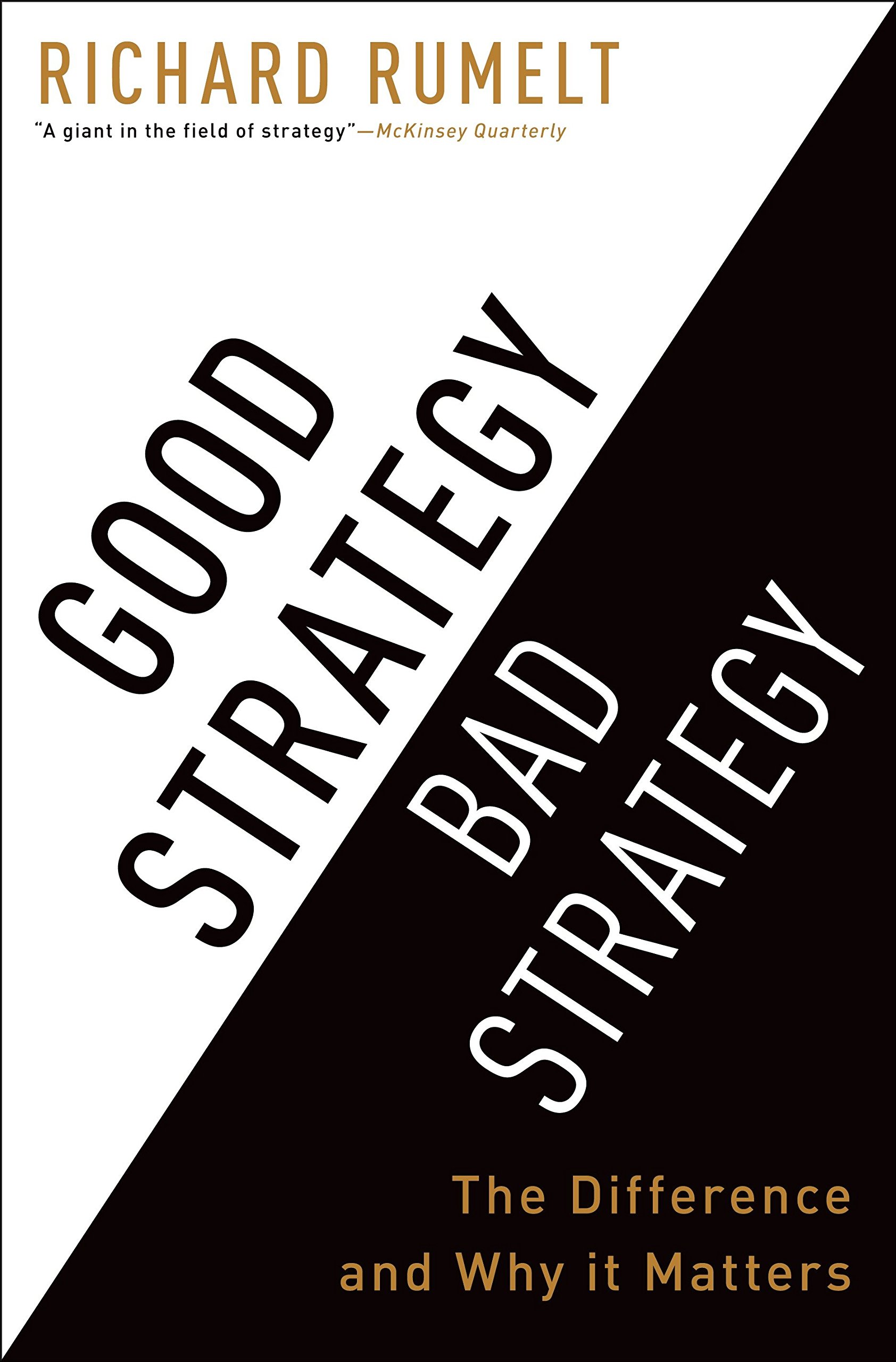Good Strategy/Bad Strategy – What is Strategy?
A word that can mean anything has lost its bite. To give content to a concept one has to draw lines, marking off what it denotes and what it does not. To begin the journey toward clarity, it is helpful to recognize that the words “strategy” and “strategic” are often sloppily used to mark decisions made by the highest-level officials. For example, in business, most mergers and acquisitions, investments in expensive new facilities, negotiations with important suppliers and customers, and overall organizational design are normally considered to be “strategic.” However, when you speak of “strategy,” you should not be simply marking the pay grade of the decision maker. Rather, the term “strategy” should mean a cohesive response to an important challenge. Unlike a stand-alone decision or a goal, a strategy is a coherent set of analyses, concepts, policies, arguments, and actions that respond to a high-stakes challenge.
Many people assume that a strategy is a big-picture overall direction, divorced from any specific action. But defining strategy as broad concepts, thereby leaving out action, creates a wide chasm between “strategy” and “implementation.” If you accept this chasm, most strategy work becomes wheel spinning. Indeed, this is the most common complaint about “strategy.” Echoing many others, one top executive told me, “We have a sophisticated strategy process, but there is a huge problem of execution. We almost always fall short of the goals we set for ourselves.” If you have followed my line of argument, you can see the reason for this complaint. A good strategy includes a set of coherent actions. They are not “implementation” details; they are the punch in the strategy. A strategy that fails to define a variety of plausible and feasible immediate actions is missing a critical component.
Executives who complain about “execution” problems have usually confused strategy with goal setting. When the “strategy” process is basically a game of setting performance goals—so much market share and so much profit, so many students graduating high school, so many visitors to the museum—then there remains a yawning gap between these ambitions and action. Strategy is about how an organization will move forward. Doing strategy is figuring out how to advance the organization’s interests. Of course, a leader can set goals and delegate to others the job of figuring out what to do. But that is not strategy. If that is how the organization runs, let’s skip the spin and be honest—call it goal setting.
